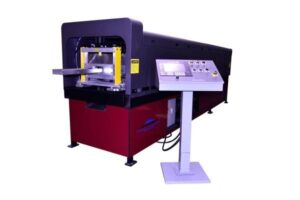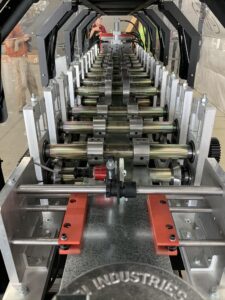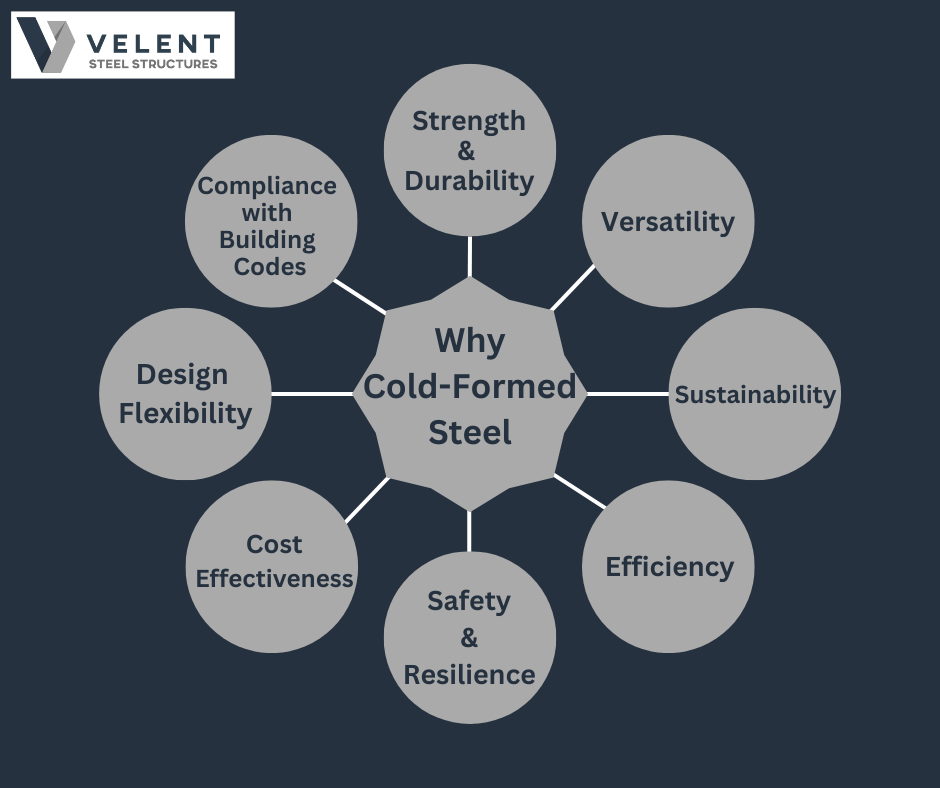Staying on schedule and within budget are top priorities in the construction industry. However, achieving these goals can be challenging due to factors like labor shortages, material costs, and design complexities. Fortunately, advancements in construction methodologies, such as the use of Cold-Formed Steel (CFS) and modular construction, offer significant opportunities to save both time and money without compromising quality or safety.
Here’s how you can transform your construction process to optimize efficiency and minimize costs.
- Embrace Off-Site Construction
Off-site construction is revolutionizing the way we build, offering unparalleled efficiency and quality while addressing common construction challenges.

Here’s why it’s becoming the go-to approach for modern projects:
- Faster Assembly: By preparing structural components such as walls, trusses, and panels off-site, projects can reduce assembly timelines significantly. For example, prefabricated walls can be installed in hours rather than days.
- Cost Control: Factory-based fabrication eliminates many variables, such as weather delays and unexpected on-site expenses, leading to better cost predictability.
- Enhanced Precision: The controlled environment allows for high-quality craftsmanship, ensuring that each piece is perfectly engineered for its intended use, reducing rework and errors.
- Sustainability Benefits: By centralizing the production of materials, waste can be minimized and recycling efforts optimized.
- Utilize Cold-Formed Steel (CFS)
Cold-formed steel (CFS) is a powerhouse material transforming modern construction by combining strength, sustainability, and design flexibility. Here’s why it’s making waves:
- Lightweight Yet Durable: CFS weighs significantly less than concrete or timber while maintaining structural integrity, making it easier to transport and assemble. This reduces labor intensity and shipping costs.
- Corrosion and Pest Resistance: Unlike wood, CFS does not degrade from termite infestations or rot, making it ideal for both humid and arid climates.
- Adaptability: From residential homes to large industrial warehouses, CFS can be molded into various shapes and configurations to suit diverse project requirements.
- Longevity: Buildings made with CFS often outlast those constructed from other materials, offering better long-term returns on investment.
- Leverage Technology for Project Management
Technology has revolutionized construction management, making projects more efficient, collaborative, and risk-averse. By leveraging modern tools, teams can ensure projects are delivered on time, within budget, and with minimal errors.

- Efficient Resource Allocation: Tools such as project management software and IoT-enabled devices provide real-time insights into labor, material usage, and equipment efficiency, ensuring resources are used optimally.
- BIM for Visualization: Building Information Modeling (BIM) allows for 3D visualization of projects before construction begins. This helps identify potential issues, optimize design, and ensure accurate cost estimation.
- Collaboration Across Teams: Digital platforms make it easier for architects, engineers, contractors, and clients to collaborate effectively, streamlining decision-making and reducing delays.
- Risk Mitigation: Predictive analytics tools help forecast potential risks, such as weather disruptions or material shortages, so contingency plans can be put in place.
- Optimize Material Usage
Efficient material usage is at the heart of cost-effective and sustainable construction. By planning smarter and leveraging modern techniques, projects can minimize waste, reduce costs, and enhance efficiency while maintaining quality.

- Prefabrication Reduces Waste: Factory-produced components ensure precise measurements, significantly reducing the material that gets discarded during on-site construction.
- Recyclable Materials Like Steel: Using materials such as cold-formed steel, which can be recycled indefinitely, aligns with sustainable building practices while lowering long-term expenses.
- Digital Modeling Prevents Over-Ordering: Software tools like BIM allow for precise calculations of material needs, eliminating unnecessary purchases and on-site storage concerns.
- Implement Lean Construction Practices
Lean construction principles are designed to maximize value while minimizing waste.

Here’s how they help:
- Streamlined Workflows: By mapping out processes and removing redundant steps, lean construction ensures every team member focuses on adding value.
- Reduced Costs from Avoiding Errors: By emphasizing quality at every stage, lean practices reduce rework, which is often a significant cost driver in construction.
- Collaborative Approach: Lean methodologies encourage teams to work together closely, improving communication and efficiency. For example, design teams and contractors align early to prevent costly changes later.
- Minimized Waiting Time: Processes are optimized to ensure that materials and equipment are always available when needed, avoiding costly downtime.
- Prioritize Training and Skilled Labor
In a rapidly evolving construction industry, the expertise of a skilled workforce is indispensable. Ongoing training ensures that teams are prepared to meet the demands of modern construction projects, from advanced technologies to sustainable practices. Here’s how they impact successful project execution
- Adapting to New Technologies: With the increasing use of advanced construction tools and methods, skilled labor is essential for maximizing their benefits.
- Error Reduction: Training programs minimize errors that could lead to costly rework or delays. For example, workers trained in using CFS are more efficient at assembling components accurately.
- Enhanced Safety: Properly trained workers are less likely to be involved in accidents, reducing human and financial costs.
- Improved Productivity: Skilled labor not only performs tasks faster but also ensures the quality of work, leading to better client satisfaction and fewer post-construction issues.
- Focus on Energy Efficiency and Sustainability
Sustainability in construction is no longer optional—it’s a necessity for future-proofing projects. By embracing energy-efficient solutions, construction projects can align with evolving market demands and regulatory standards.
- Energy-Efficient Designs: Incorporating features such as passive solar heating, natural ventilation, and energy-efficient insulation reduces operational costs over the building’s lifespan.
- Using Recyclable Materials: Materials like CFS are not only durable but can also be recycled at the end of the building’s life, contributing to a circular economy.
- Renewable Energy Integration: Solar panels and other renewable energy systems are becoming standard additions to modern construction projects, reducing utility bills and enhancing environmental impact.
- Regulatory Compliance: Many regions now have strict green building codes. Adopting energy-efficient practices early helps avoid penalties and ensures compliance.
Conclusion
Efficiency and cost savings in construction are achievable through the right combination of innovative materials, advanced technology, and sustainable practices. Cold-formed steel and modular construction offer compelling solutions for modern projects, making them faster, greener, and more cost-effective.
At Velent Steel Structures, we are committed to helping you embrace these advancements. Whether it’s through cutting-edge CFS solutions or precision-engineered off-site fabrication, we’re here to make your vision a reality.
Ready to take your construction project to the next level? Contact us today and let’s build smarter together.


